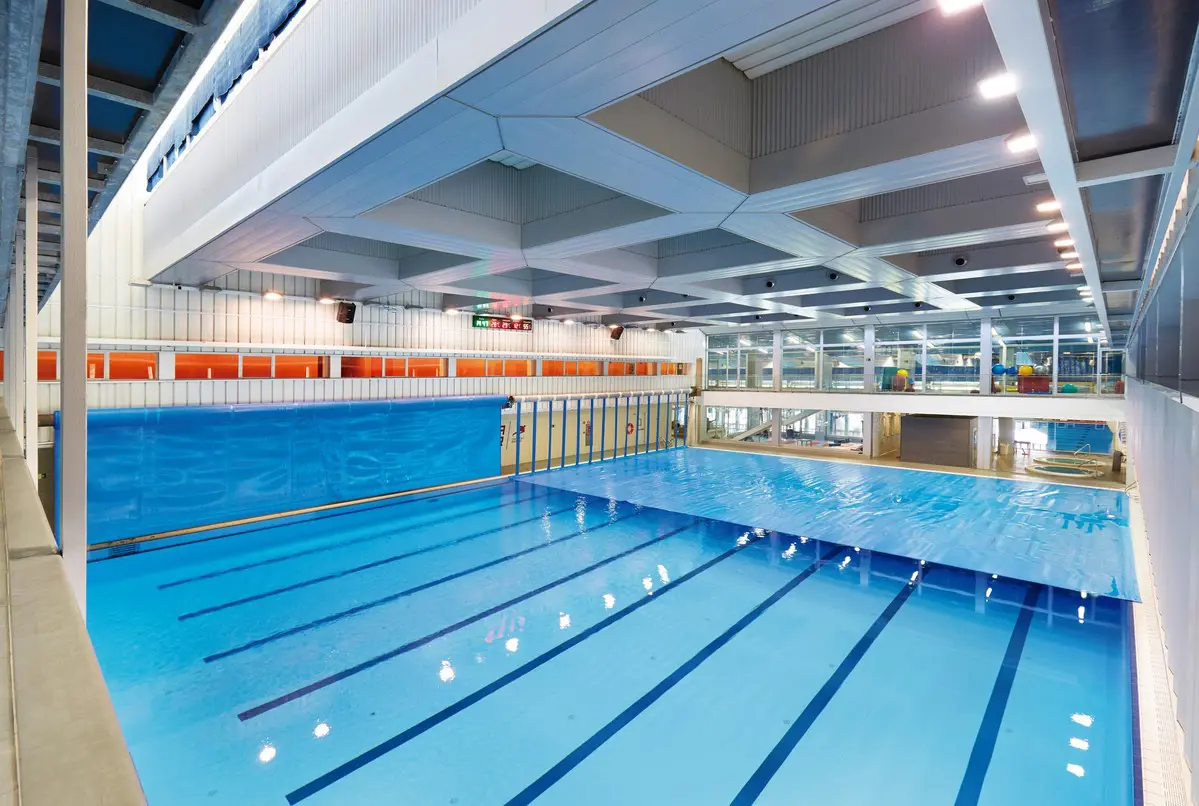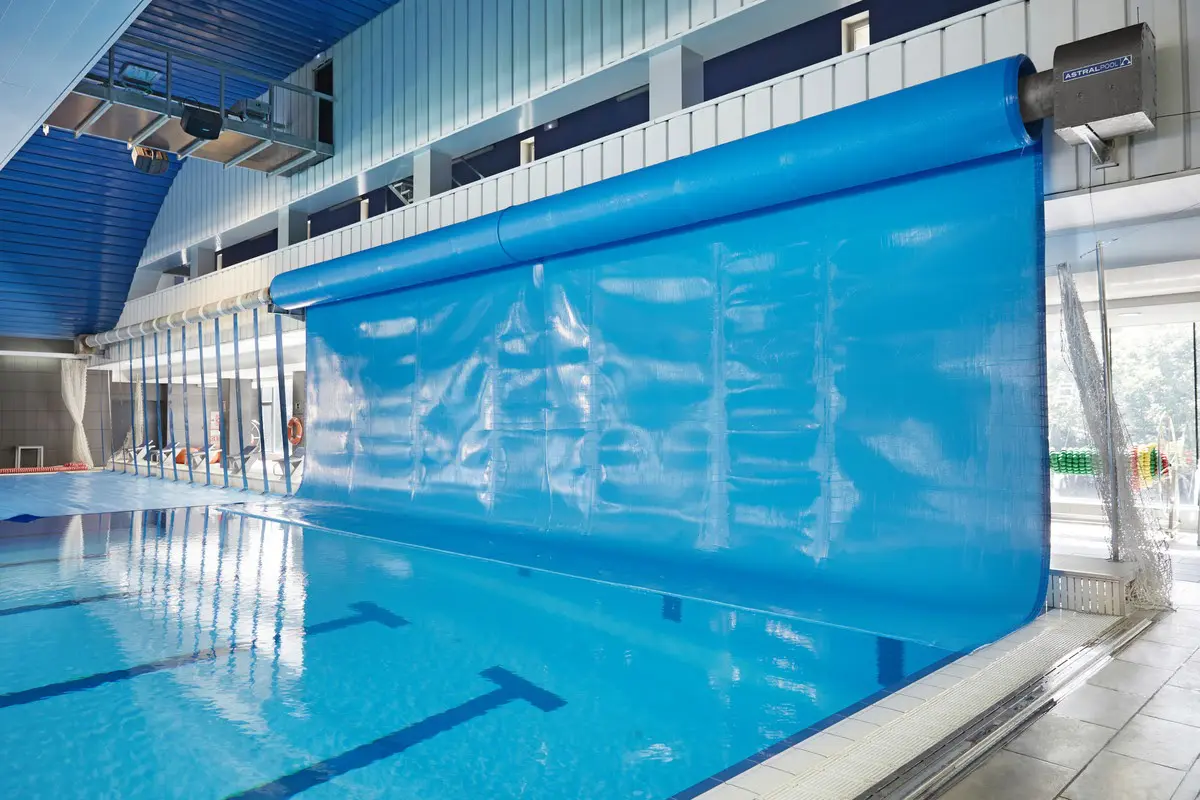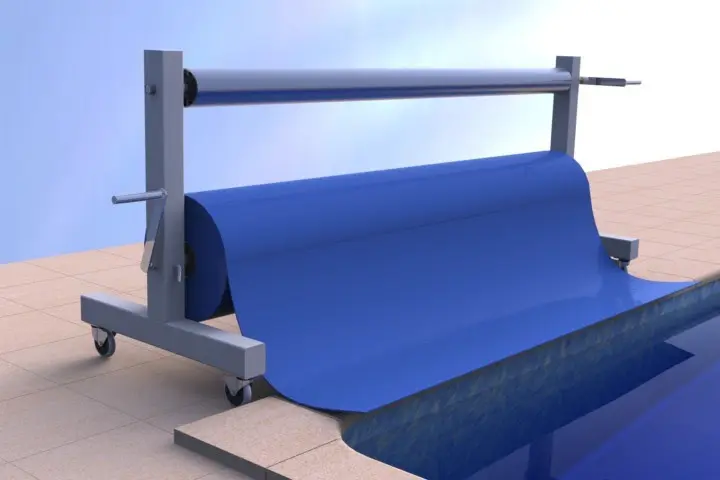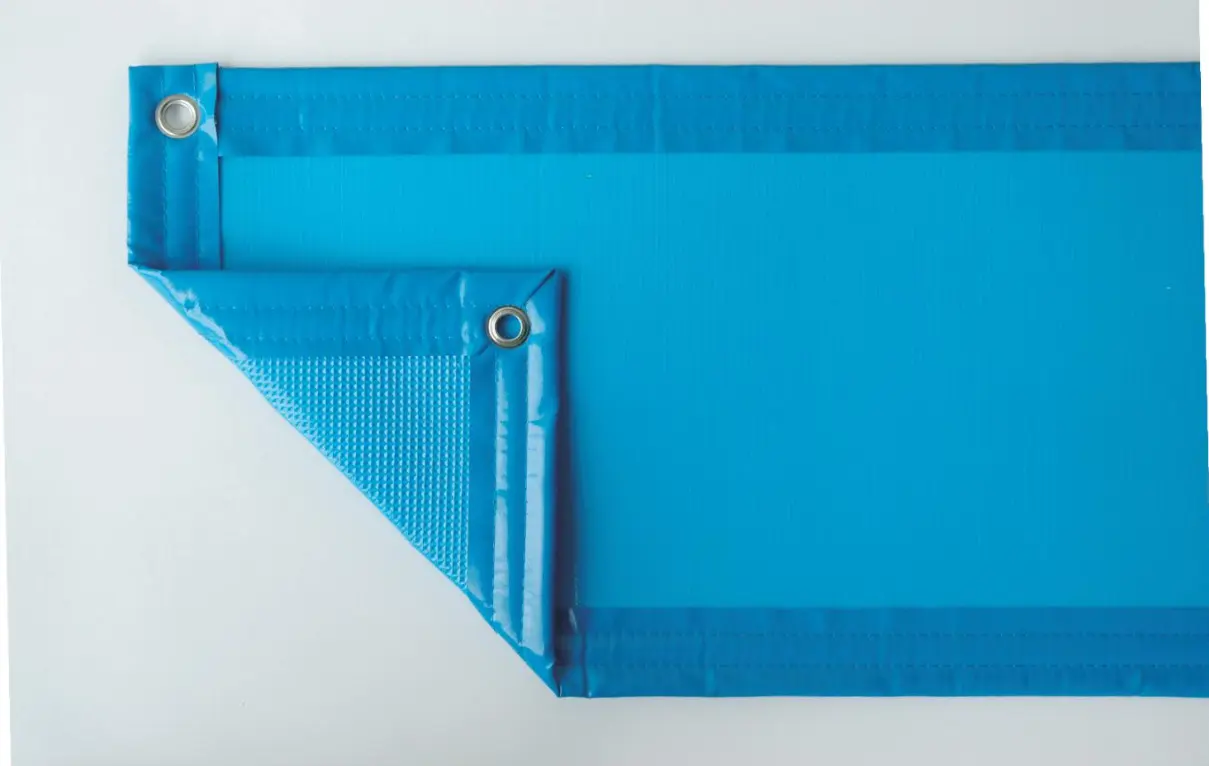Water temperature is essential to guaranteeing pool users’ pleasure and comfort. As a result, choosing the right water temperature management system is a key decision that can help owners optimize their pool’s sustainability and economic performance.
But what exactly is a thermal pool cover and how does it work? How can operators choose the best thermal pool cover for their needs, whether they’re a sports club, competition or commercial installation? Here, we explain what needs to be taken into account.
Dive deeper with the eBook
What is a thermal pool cover?
A thermal pool cover is a system specifically designed to prevent heat loss in pool water, thus keeping the installation warm whenever the facility is not in use. Installed both on indoor and outdoor systems, a thermal pool cover minimizes water evaporation, which represents the largest source of resources and energy loss for swimming pools.
As water evaporates, new hot water has to be added to compensate and maintain the water level, thus using massive amounts of energy to heat that water. To prevent this process from occurring, a thermal pool cover incorporates air pockets that help reduce heat loss and trap warmth underneath. This is particularly useful for pools that include a water heating system.
At the same time, in outdoor pools, a thermal pool cover captures solar radiation and transfers this energy to pool water, thus effectively heating water while also avoiding heat loss. As a consequence, installing a thermal pool cover system means it is possible to significantly diminish water evaporation processes, effectively manage pool temperature and, subsequently, reduce swimming pool heating costs.


Thermal pool cover features for commercial pools
Commercial pool installations such as sports clubs, municipal pools or competition pools can all benefit from installing foam thermal pool covers. This model includes the following characteristics:
- They can be installed in a newly-built pool or adapt to an existing pool, improving its efficiency.
- A nominal thickness of 5mm is recommended for indoor pools, both for standard and large-sized installations. However, this thickness can be revised to adapt to specific climatic needs, including the different bathing seasons.
- A thermal pool cover’s dimensions and shape might vary according to each pool and can be customized.
Types of pool covers and how to choose the right one
Thermal pool covers can be either automatic or manual, depending on the type of roller used in their design. An automatic system is easier to operate and facilitates the covering and uncovering of pool installations, as it opens and closes at the touch of a button. They are therefore recommended for large pools and commercial installations, where a manual system may represent operational issues.
Customized solutions are also a possibility for commercial pool owners considering which system might work best for their installation. These may include the use of CC motors as well as stainless steel shafts, all of which must be designed and manufactured to comply with relevant industry standards.
What are thermal pool covers made of?
Considering the main purpose of a thermal pool cover is to avoid water evaporation and heat loss, choosing the right material is crucial to guarantee the system fulfills its goal. Pool covers for commercial pools are commonly made of polyethylene, a thermoplastic polymer that has a variable crystalline structure with low thermal conductivity. Furthermore, to enhance its thermal capabilities, a thermal pool cover is typically laminated with a radiation-cured blue polyethylene foam with an embossed polyethylene film underneath.


The benefits of thermal pool covers
Efficient and sustainable
Installing a thermal pool cover significantly minimizes the dehumidification processes and reduces heat loss derived from water evaporation by up to 80%. Regardless of the type of heating system in place, this translates into major cost-efficiency and sustainability advantages, minimizing the new water inputs and energy needed to heat pools thus reducing the installation’s environmental impact.
Thermal pool covers can also bring additional benefits for pool installations that use a chemical disinfection system. As evaporation is reduced, pool owners can also decrease the amount of chemical products used for disinfection.
Comfort
Maintaining a pleasant water temperature is key to ensure pool users experience an enjoyable swim.. A thermal pool cover helps pool operators keep water temperature at the desired level, enhancing comfort.
Facilitates pool use and maintenance
By preventing dirt and debris from falling into the water, a thermal pool cover reduces filtration costs. Choosing a quick and easy-to-use thermal pool cover will also make a difference: lightweight covers and those which come with a roll-up system further simplify the process.
Adaptable, quick to install and durable
Thermal pool covers easily adapt to different pool sizes and spaces. At the same time, they’re made using prefabricated components, which considerably reduce installation time and minimise service disruptions. The right thermal pool cover will also be durable: firstly, because polyethylene is a reliable plastic material; secondly, because air pockets are specially designed to endure contact with the water’s surface.
Pool covers: main applications for different installations
Competition pools
Competition pools are usually located in large venues, which means there is a considerable risk of dirt and other objects contaminating pool water. The installation of a thermal pool cover will guarantee the installation is protected from such issues, as well as reducing evaporation and maintaining water temperature.
Sports clubs
By installing a thermal pool cover, sports clubs will see their costs and resource usage decrease. At the same time, as the installations’ environmental impact improves, sports club operators can leverage the opportunity to integrate a sustainability narrative into their branding efforts.
Public pools
Reduced energy and maintenance costs associated with thermal pool covers are key to guaranteeing that public pools remain a viable and economically-efficient installation for communities. This can also encourage transparency in public entities and enhance their journey towards sustainable practices.
Private pools and other options
Installing a thermal pool cover on a private pool represents an opportunity to cut expenses in an easy and efficient manner. It also facilitates and cheapens maintenance, thus increasing the owners’ satisfaction with their installation.
Making pool ownership uncomplicated and sustainable
A thermal pool cover represents a wise investment for swimming pool owners and operators, who will see their costs and energy resources reduced remarkably. Preventing heat loss through evaporation, reducing dehumidification, stopping dirt and impurities from infiltrating water and reducing new water inputs are but a few of the key benefits.
In order to guarantee their investment is sound, pool owners and operators should employ trusted and experienced pool installation experts. Such a team will guarantee the thermal pool cover complies with national mandatory regulations (such as the RITE standards in Spain, which include building regulations on heating appliances), while also devising a system that adapts to each pool’s needs. With these tools, you can ensure the return on your investment is maximized from every perspective.
